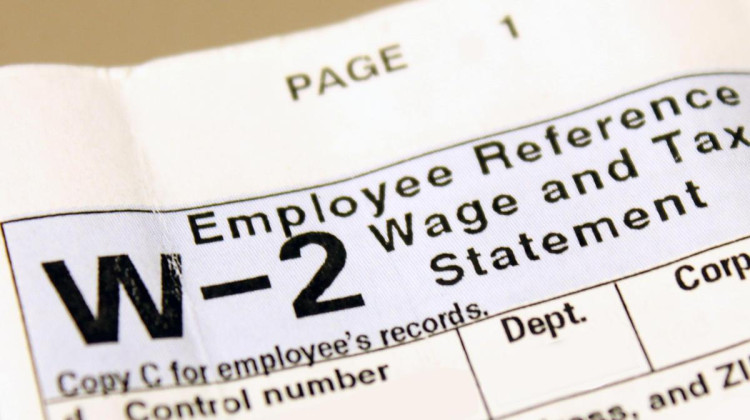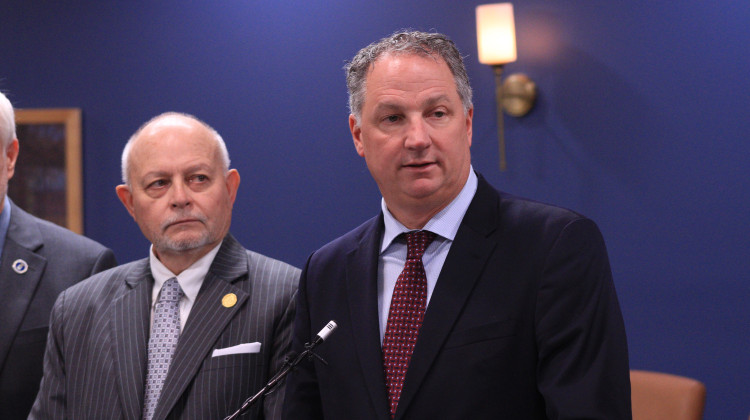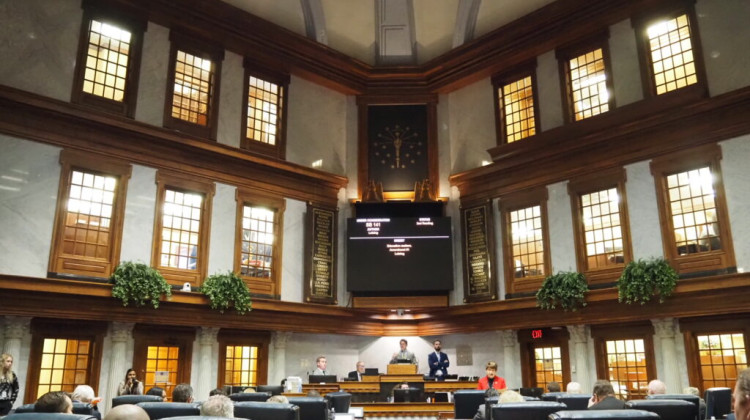
The Urban-Brookings Tax Policy Center's Richard Auxier said when comparing tax rates between states, it's important to remember all comparisons are relative.
Lauren Chapman / IPB NewsHow does Indiana’s tax structure compare to other states? One member of our audience in Goshen was curious.
Richard Auxier is the principal policy associate at the Urban-Brookings Tax Policy Center.
He said when comparing tax rates between states, it’s important to remember all comparisons are relative.
“It's all relative,” Auxier said. “These are all part of larger decisions about how we want to fund government and what we want to spend on government. And just because Indiana or any other state is average, that doesn't mean good. It just means that it's in line with what other places are doing.”
Auxier said Indiana tends to collect less property tax than other states.
“Indiana collects less in property taxes per capita than both the national average and in neighboring states,” he said. “And if you look at the entire share of all the money it gets – so all the money it gets from all its governments, plus federal governments – Indiana gets roughly 11 percent from property taxes, while on average, in the U.S. that's it's closer to 16 percent.”
Auxier said the effects of taxes can look different for every Hoosier, and that what is considered "low" to one person may feel different to another. Auxier also said there are multiple kinds of property tax – including personal property taxes, which include things like computers and manufacturing equipment for businesses.
He said sales and income tax rates tend to vary as well.
“Indiana has a very low individual income tax rate,” he said. “It has a relatively low corporate income tax rate, and it has, about an average sales tax rate.”
He added Indiana does not have a local sales tax.
Auxier said these low income tax rates tend to benefit high earners.
“Low income taxes, well that's going to be particularly good for higher income residents,” he said. “Indiana does not have much to support low-income residents relative to other states.”
READ MORE: Federal program helps low-, moderate-income Hoosiers with tax preparation
Join the conversation and sign up for the Indiana Two-Way. Text "Indiana" to 765-275-1120. Your comments and questions in response to our weekly text help us find the answers you need on statewide issues.
Auxier said the earned income tax credit is one example of something Indiana offers to assist low-income workers.
“It … is a tax credit to low-income workers to help them supplement their income if they're out working,” he said. “Indiana has one, but its credit is relatively small compared to other states.”
He said Indiana also does not have a child tax credit – a tax credit beneficial to children and families. Auxier said all of these considerations create a regressive tax structure for the state.
“Regressive means that lower-income residents typically pay a higher share of their income than higher-income residents,” Auxier said. “Now, if you look at actual amounts, higher-income residents pay more in total because they have more money in their spending and on taxes. But if you look at your tax payment as a share of your income, that is generally higher for a low-income Indiana household than it is for a higher-income household.”
Auxier said changes in tax policy will always lead to either higher or lower-income taxpayers paying more and these sentiments are what states must consider when enacting tax policy.
“And then this all gets to changes – which is if you want to make changes, it's going to affect who's paying, and someone will pay more and some will pay less depending on the goals and designs of your policy changes,” he said.
Auxier said taxes will also look different for all people — and that what is considered a “low” tax in one area may affect Hoosiers differently.
Violet is our daily news reporter. Contact her at vcomberwilen@wfyi.org or follow her on Twitter at @ComberWilen.
 DONATE
DONATE






 Support WFYI. We can't do it without you.
Support WFYI. We can't do it without you.